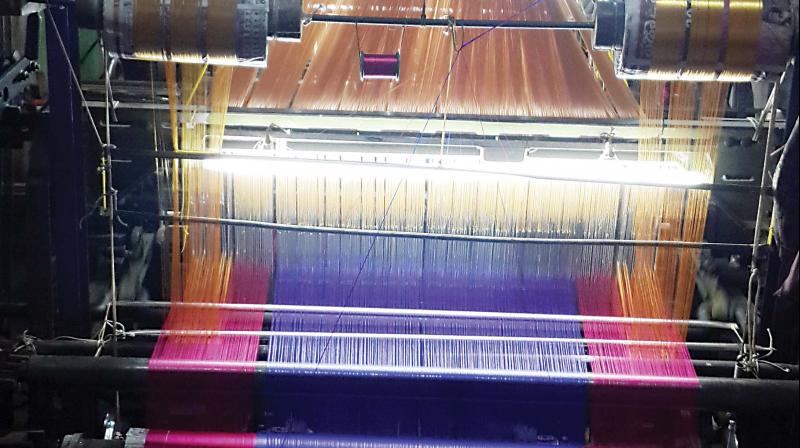Belagavi's Shahpur saree: Bowling women over as ever

Mention the name, Belagavi anywhere in India and people would immediately recall the lingering border row between Karnataka and Maharashtra from the post-Independence days which remains unresolved leaving a festering sore in ties between the two states. But ask a textile industrialist in China about Belagavi and he would wax eloquent about the Shahpur saree, the intricate weaves which have left generations enthralled and made the saree a household name across the world. What makes this industry so amazing is that those engaged in it, have been able to innovate and adapt to changing technology and designs, making sure the saree continues to remain a much sought after product anywhere in the world. NAUSHAD BIJAPUR explores the tale of the Shahpur saree and how it has been able to stand the test of time when many other native wonders have vanished into the abyss of history
Belagavi has been receiving quite the royal treatment over the last decade with successive governments splurging on developing it into the state's unofficial second capital but its success story does not end with this. In fact, should you happen to ask textile industrialists from China, Turkey, Bangladesh and their neighbouring countries about Belagavi, chances are they will know little about the border row and much more about the Shahpur sarees it produces.
A 100-year-old industry in the city, its weavers located largely in the Khasbag and Wadgaon regions produce thousands of Shahpur sarees unique in design and like no other variety in the country that are not only popular in local markets, but also in many Asian countries like Sri Lanka, Bangladesh, Singapore, Malaysia and China, where they are exported.

So well is the industry doing, with its popular 10 varieties of sarees, that several textile merchants from China, Turkey, Bangladesh and neighbouring countries often visit the local powerlooms to learn what makes them so successful. “Many foreign businessmen show keen interest in our business, but they find it difficult to set up a similar industry in their countries due to their lack of skilled labourers. We attribute our large production of these sarees mainly to our skilled labourers, who work hard at producing them,” says Mr Parashuram Dhage, a weaver with several powerlooms of his own in Khasbag.
Despite its ups and downs, the industry has never stopped production. Although an economic crisis crippled many major business houses and factories that largely depended on the saree industry in the past, the zing is back in Belagavi's weavers’ colonies with over 50,000 sarees being produced by their powerlooms every day now. The secret appears to be new technology. After decades of using handlooms and other manual processes, most weavers have now switched to computerised powerlooms, a change that has heralded a huge rise in demand for the sarees, reveals Mr Dhage.
“Demand has risen drastically in most markets ever since our production gained momentum with the installation of computerised powerlooms. Now merely one labourer is required for each powerloom against three or four employed earlier,” he says.
The use of more sophisticated computerised powerlooms, is allowing the families, who have been in the traditional business of producing Shahpur sarees for generations, to double their production while employing fewer labourers. While hardly one saree was produced in two days by a powerloom in the past, they are now producing them in hundreds and thousands.
Starting from plain weaves, the weavers make 10 kinds of sarees, including what they call a butta saree, jakor saree, polyster saree, pure silk saree, and cotton saree. The sarees are made based on orders of dealers and agents, who market them.
“All these traditional sarees are cost-effective as weavers sell them for Rs 200 to Rs 2,000 a saree depending upon its quality. The dealers, who spend more on the packaging and display, ask for more. Although these sarees are produced in Khasbag and Wadgaon, they have come to be known worldwide as Shahpur sarees because the dealers, who market them, hail from Shahpur,” explains Mr Dhage.
Amidst a thousand new clothing designs and fast evolving tastes, the saree will continue to endure and entice women who know that they can never get over its charming appeal. And so will the Shahpur saree, for its stunning hues and twirls are difficult to replicate and few can pamper the feminine instincts like it does.

